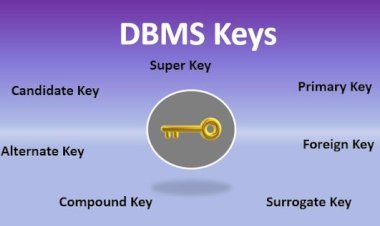AI Data Labeling with Human-in-the-Loop: Improve Accuracy & Quality
AI data labeling gets better with human-in-the-loop workflows. Improve accuracy, fix edge cases, and keep your training data high-quality at scale.

Automation speeds up labeling, but it doesn’t catch everything. In any data annotation platform, there are limits to what models can label correctly without help. That’s where human-in-the-loop (HITL) workflows come in.
HITL means humans stay involved at key points: reviewing low-confidence labels, fixing edge cases, and keeping overall quality in check. When you’re working with an AI data annotation platform, human review adds the context machines miss.
When to Involve Human Review
Image source: gstatic.com
Human-in-the-loop workflows aren’t about reviewing everything. They’re about stepping in at the right moments, where automation falls short or risk is too high. When should a human take over?
- Low-confidence predictions. If the model isn’t sure, someone should check. Most platforms let you set a confidence threshold for manual review.
- Edge cases or rare events. These don’t show up often, so models usually guess. Human input helps catch these early before errors spread.
- Changing label definitions. When your schema evolves, models may use outdated logic. A human can adapt quickly to new rules.
- New or unseen data types. If the model hasn’t seen similar data before, predictions are less reliable, especially in high-stakes use cases.
Common examples include:
- Sentiment classification: sarcastic or ambiguous text gets misclassified
- Bounding boxes in an image annotation platform: overlapping objects confuse automation
- Tracking in a video annotation platform: identity switches mid-sequence aren’t caught
A data annotation platform that supports human-in-the-loop lets you step in without slowing everything down. You can target reviews only where they add value. This approach keeps scale and quality aligned, especially when working across multiple data types.
How Data Annotation Platforms Support Human Review

Image source: website-files.com/
Good platforms make human-in-the-loop workflows easy to manage. You shouldn’t need a side process just to review data or fix mistakes.
What the Workflow Looks Like
Most annotation platforms follow a clear flow:
- Annotate. Tasks are labeled by humans, automation, or both
- Flag or auto-route. Low-confidence or unclear items are sent for review
- Review. A reviewer checks, corrects, or approves the label
- Resolve. The label is finalized and passed to export or model training
This cycle can run in real-time or asynchronously, depending on the setup.
Key Roles in the Process
- Annotators do the first-pass labeling
- Reviewers catch mistakes, resolve conflicts, and maintain standards
- Project leads monitor performance and update label rules when needed
Built-in role management makes this efficient. Reviewers don’t need to redo work, they just handle what needs attention.
Features That Support Human Review
- Task routing based on label confidence or annotator experience
- Commenting tools for label clarification
- Audit trails to track who changed what, and why
- Visual diff tools to compare original and corrected labels
An annotation platform that supports these features doesn’t just speed things up. It also reduces back-and-forth, improves accuracy, and gives your team better control.
Quality Control Techniques That Rely on Human Input
Image source: Gstatic.com+
Even with smart automation, label quality still depends on people. The best results come from simple, repeatable checks; not reviewing everything, but reviewing the right things.
Spot Checks and Sampling
You don’t need to review every label, checking a random sample, typically around 5–10% of completed tasks, is often enough to reveal if there’s a problem. Keep track of error rates and watch for recurring patterns. If the number of mistakes increases, it’s important to raise the level of review. When one annotator’s work consistently requires more corrections than others, that’s a clear sign to intervene early.
Review Queues and Approval Layers
Some datasets require stricter oversight, and a second review can catch issues that may have been missed the first time. For safety-critical data, using a tiered review process adds an extra layer of quality control. More challenging tasks should be assigned to senior reviewers, and clear rules should be in place to determine what gets escalated. This approach helps maintain a balance between speed and control, especially when working with large teams.
Label Disagreements and Conflict Resolution
When two reviewers disagree, someone needs to make the final call. Conflicts are often resolved through methods like majority voting, which is common in crowdsourcing, or by assigning disputes to a lead reviewer. Having a clear rulebook for handling edge cases also helps. A good annotation platform should make it easy to track these conflicts and show how they were resolved, which helps keep future annotations consistent and reduces unnecessary back-and-forth.
Automation Isn’t the Enemy, It’s a Tool

Image source: cityam.com
Human-in-the-loop doesn’t mean rejecting automation. It means using it where it helps and catching what it misses.
What Automation Handles Well
- Repetitive tasks (e.g. drawing boxes around common objects)
- High-confidence predictions
- Pre-labeling for basic classification tasks
- Label formatting and validation rules
These free up human reviewers for more complex work.
Why Human Review Makes Automation More Useful
Automated labels often look right, but only at a glance. A human can catch:
- Subtle mistakes in class definitions
- Missed objects in busy scenes
- Labels that follow the rules but ignore the context
That’s especially true in a video annotation platform, where tracking might fail over time. Or in an image annotation platform, where objects overlap or blend.
Risks of Relying Too Much on Automation
Relying too much on automation carries risks, such as accepting every pre-label without verifying it, scaling up before testing label quality, and overlooking edge cases that impact real users. If automation isn’t reviewed early, the consequences often appear later in the form of failed models, wasted time, or the need for costly retraining.
Measuring Human Review Impact
Image source: gstatic.com/
Human review adds time, but it also adds value. You need to measure both to understand the return. What to track:
- Error rate before vs. after review. Are humans catching meaningful mistakes?
- Time spent on review. Is the process too slow or targeted well?
- Cost of review vs. cost of model failure. Labeling errors can lead to biased or broken models. How often does review prevent that?
- Disagreement rate. How often do reviewers change labels? High rates may signal unclear guidelines or inconsistent work.
If you don’t track the impact of human review, you can’t improve it. You also won’t know when to scale up or scale back. A well-tuned human-in-the-loop setup helps catch important errors, gradually improve training datasets, and prevent unnecessary rework or retraining down the line. Without this visibility, you're guessing: on quality, cost, and performance.
Final Thoughts
Automation speeds things up, but human input keeps labeling accurate. A well-planned human-in-the-loop process lets you scale faster without losing control over quality.
The right mix of tools and judgment helps your annotation platform produce training data that your models and your team can trust.
FAQ on Human-in-the-Loop in Data Annotation
1. What does human-in-the-loop (HITL) mean?
It means humans check and fix the work that AI or automation does. They step in where the machine is not sure.
2. Why do we need humans if AI can label data?
AI is fast, but it makes mistakes in tricky or new cases. Humans make sure the data stays correct.
3. When should humans review labels?
When the AI has low confidence, when data is new or rare, or when rules change.
4. How do annotation platforms help with human review?
They send unclear tasks to reviewers, track changes, and make it easy to see who fixed what.
5. Does human-in-the-loop slow things down?
Not much. Humans only check where needed. This keeps speed and quality balanced.

















